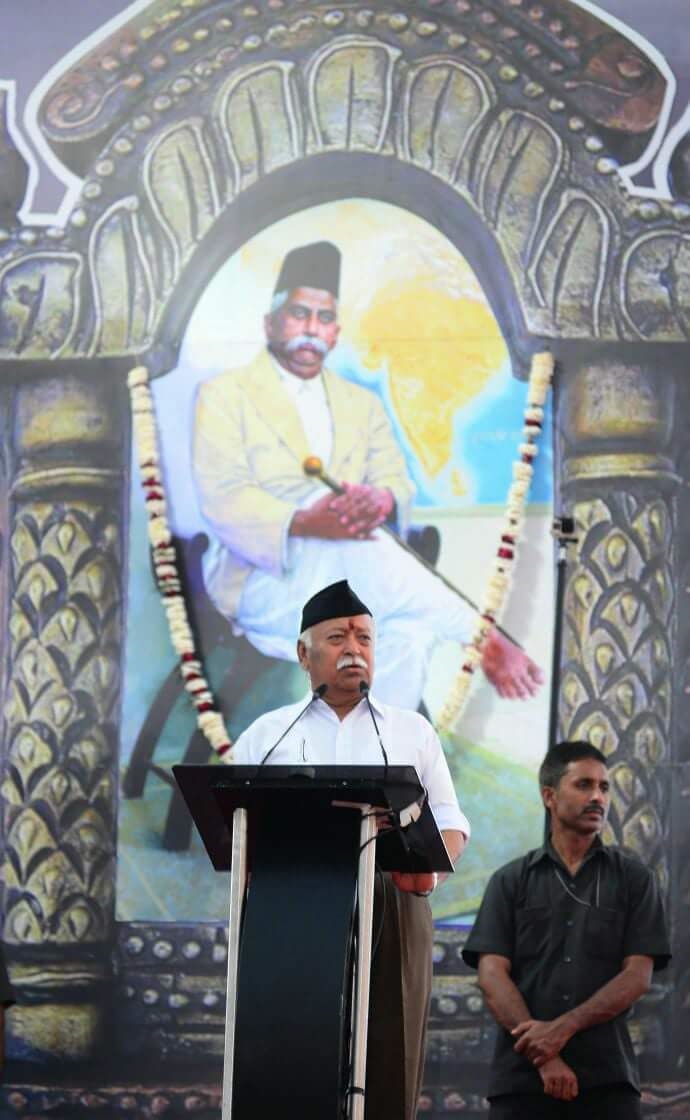Bharatiya Classical music draws the world to truth, compassion and divinity

Harmony though music
It was because of the special quality of our music, that it was included as an integral part in the methods and activities of the Sangh, from the early years of the formation of the Sangh. Collective listening and performance of music creates Sanskaras. The cultivation of a shared musical note produces a collective Sanskara and harmony in the society. Through music sangh aims to unite the entire society. This is our integral duty, not just a favour that we are doing from a superficially cultivated benevolence. The instrumentalist receives no compensation for his efforts. The se swayamsevaks come from diverse age groups , diverse social backgrounds and diverse personal habits. Music is not their profession. From such a diverse group of swayamsevaks , the S angh cultivates a harmonious symphony. S wayamsevaks contribute money of their pockets to serve the society and produce a wonderful tune according to the S angh program. These volunteers do not product music for their entertainment or fame but to serve the nation. The nation gives us in abundance. We too must strive to serve the nation. All that we have received as learning, we employ again in the service of the nation.

Dr. Bhagwat ji said, the first sanskara, is to learn to give selflessly. The world had a wrong notion that our (Bharatiya) music was suitable as entertainment in social gatherings or for performing in musical groups . But it was judged incapable of inspiring valour, strength and heroism. It hurts us that we had no surviving tradition of a publicly exhibited martial musical form. We had no native tradition of a musical for m for marching. We borrowed such compositions from the English. After we developed experience with such forms, we then developed compositions based on the Bharatiya Ragas. We composed tunes based on the ragas and talas of the Bharatiya traditions. It is an established principle in the Bharitya traditions to accept methods from every corner of the world. but we do not become subservient upon them. The third point is of self discipline. No participant in the group can break step from the group. Participants do not perform as they will. We have to perform in harmony with the entire group.
Dr. Bhagwat ji said, that music is the source of the sanskara of harmony. Only when the note and the beat are joined together in harmony music is created .We have to restore Bharat to her natural status as the V ishwa guru. We are all Hindus a nd ours is the Hindu Rashtra. This is not a sectarian or ethnic name. We have the name because we believe in the principle of “Vasudhaiva Kutumbakam” and consider the entire world as our own family . Nations across the world have various sectarian identities. Akhand Bharat alone is identified as the Hindu Rashtra. This is because we proclaim and desire the well being of the whole world. To have affinity to the whole world is therefore natural to us.
The Sangh aims at equality. Unfortunately the society began viewing each other through lens of Jati and practised untouchability too . Because of this , large sections of our society have been left behind. It is a burning need to end these evils. BabaSaheb ji Ambedkar desired to bring both independence and harmony together to our country. And he asserted that for this equality is a primary requirement. It is also our view that brotherhood and harmony are the manifestation of humanity. The S angh recognizes the potential of music towards these aims and therefore adopted the practice of martial music.
Mohanji said, no single group has an exclusive claim to the development of the country. It is a privilege and duty for every member of the society. We must all cultivate the right sanskaras and resolve to build a strong, secure and capable nation. Where the right sanskaras are missing, there there is a misuse of strength. But those with the right sanskaras will remove the oppression upon the society and provide security to the society . He exhorted all swayamsevaks and all citizens of Bharat to work towards the welfare of the whole world and to restore Bharat to her natural status as the “V ishwa G uru ” .
The C hief G uest, IAS officer, Shri B.L Naval said, that it is indeed possible to attain the objectives laid down for us by Baba Saheb Dr. Bhim Rao ji Ambedkar , in the constitution. We need to progress towards becoming a harmonious, inclusive and just society without divisions.
Special guest, industrialist, Shri Kishore Rungta said that Bharat is an ancient nation built upon the foundations of unity in diversity. He asserted that it is this ancient Hindu legacy alone that can rebuild the nation. And the Rashtriya Swayamsevak Sangh is doing this work with the greatest dedication and success.
Thousands of people from Jaipur attended this program along with the swayam sevaks. The Sangh ghosh ( Musical band ) enthralled the audience.
In the Swaragovindam program, swayamsevaks played the Shankh ( bugle) , flute, Aanak (side-drum) , trumpet, bass drum and many other instruments. They played compositions in Meera, Chetak, Shivranjani, Keerna, Anup, Durga and many other ragas. With the music they also exhibited many geometric and decorative formations in marching. This magnificient demonstration of swara, laya and taal in unison raised the spirits of the entire audience to great heights.
Veer Matas honoured

Shri Bhagwat honoured veer maatas woman at the meeting. Shrimati Kanta Yadav, Shrimati Sumitra Devi, Shrimati Nisha Lal and Shrimati Sampat Kanwar. The Veer Matas, Shrimati Mary Kutti Thomas, and Shrimati Lakshmi Devi Bundela. They were presented with portraits of Bharat Mata , Shawls and Shriphala (coconut).
In the march past, 1276 swayamsevak instrumentalists participated. Thousands of ordinary citizens in the route honoured the march past with showers of flowers.

